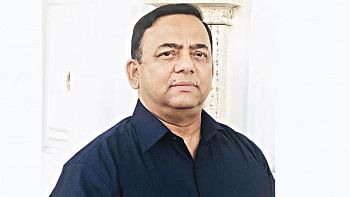First modular joint venture power plant ready for production
Bangladesh's first modular combined-cycle power plant, jointly developed by the government and United Group, is ready to take off in Ashuganj to help boost electricity production.
“Given the pressing, immediate demand for electricity supply, the government is opting for projects with smaller gestation period. As per the power purchase agreement, 15 months were allocated for the project to be in action from February 19, 2014,” Moinuddin Hasan Rashid, managing director of United Ashuganj Energy (UAEL), said in a statement.
Because of an acute power crisis, the company worked to commission the plant ahead of schedule.
“Now, the power plant is perfectly eligible for operations.”
The plant allows the public sector to maintain its ownership in the power sector while letting the private sector implement the project efficiently and arrange financing for it too.
The project comes at a time when over a third of the country's population is still without electricity access, creating a significant impediment to economic growth.
A core demand of the new project was meeting the government's strict guidelines for efficiency through implementing a more efficient and flexible modular co-generation system.
The new plant was a test case by the government, Rashid said.
“To ensure project development at fast pace, private sector participation is inevitable while facilitation and cooperation of the public sector ensures timely completion of the project,” he added.
UAEL has designed the project to have an unprecedented combination of flexibility and efficiency making this new plant eligible as a model for the country's power sector, said Syed Abdul Mayeed, former chairman of Bangladesh Power Development Board.
“The facility has been designed such that it has a thermal efficiency of about 47 percent.”
A good majority of the power plants in Bangladesh are extremely old ranging from 25 to 40 years, with operating (thermal) efficiency range between 22 to 28 percent.”
Efficiency is the single most important factor in determining the viability of a power plant as poor efficiency means greater fuel consumption, lower power output and increased emission.
“Achieving such high efficiency will definitely be a milestone for the government in the power sector,” he said.
The new plant comprises 20 units of Wartsila's gas engines, each producing about 9.73MW electricity.
In addition, the facility has a co-generation element, whereby the exhaust heat from the engines will be run through the waste heat recovery boilers, fitted with each engine, to produce steam, which will turn a steam turbine-generator, boosting the power output by a further 16.1 MW.
Designing the power plant itself was a big challenge indeed as the plant had to be accommodated within only 6.48 acres plot but collaborative work led to a compact plant that meets all technical demands and is environment friendly due to reduced emissions, said Rear Admiral Bazlur Rahman, a director of UAEL.
Bangladesh has a very erratic demand for electricity, necessitating these kinds of modular plants which can ramp production up and down within minutes, Faridur Rahman Khan, another director of UAEL, said.
The sponsor company, UECL, has arranging foreign financing for the project where the World Bank is funding around 50 percent of the debt portion from its IPFF fund and the remaining 50 percent is funded by a consortium of lenders comprising DEG, IFC, Finnvera (ECA) with Standard Chartered Bank as the lead arranger.

 For all latest news, follow The Daily Star's Google News channel.
For all latest news, follow The Daily Star's Google News channel. 



Comments